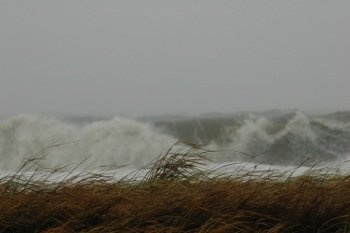
The Atlantic hurricane season has whimpered to a close for 2013, but Mother Nature may be warming up for a cold and snowy winter ahead.
The Sussex County Emergency Operations Center reminds the public that just as preparations are a must before each hurricane season, the routine should be no different as the calendar moves into the heart of the nor’easter and winter storm season that spans October to March.
“Just because hurricane season has ended doesn’t mean the threat from severe weather is going on break,” Sussex County EOC Director Joseph L. Thomas said. “Like hurricanes and tropical storms, winter storms and nor’easters pose a significant risk to life and property. Flooding, high winds, heavy snow, icy travel and downed power lines are just some of the many effects we can see this time of year. So it’s important that the public remain vigilant throughout the year to be prepared for whatever might come our way.”
Sussex County and Delaware have experienced some extreme winter seasons in recent years, with repeated coastal storms and back-to-back blizzards in 2009 and 2010 that scoured beaches, flooded fields and blanketed the landscape with several feet of snow. The National Oceanic and Atmospheric Administration’s seasonal outlook predicts no unusual trends this winter, but forecasters are keeping an eye on a strengthening La Niña and highly variable Arctic Oscillation patterns, which can fuel stormy, wintry weather in the Mid-Atlantic region.
To ensure you are prepared for winter weather, the Sussex County EOC suggests the following preventive actions:
Before the Storm
- Spread an ice melting agent on walkways and driveways to keep surfaces free of ice; use sand to improve traction;
- Have snow shovels and other equipment handy;
- Winterize your vehicle:
- Ensure antifreeze levels are sufficient to avoid freezing;
- Ensure the heater and defroster work properly;
- Check lights and flashing hazard lights for serviceability;
- Pack a winterization kit that includes an ice scraper, de-icer for door locks, blankets, and sand or kitty litter to provide traction if your vehicle becomes stranded.
During the Storm
- Listen to television, radio, or NOAA Weather Radio for weather reports and emergency information. Also, visit the Sussex County EOC website and its Twitter feed, www.twitter.com/SussexCtyDE_EOC, for up-to-date information;
- Eat regularly and drink ample fluids; avoid caffeine and alcohol;
- Conserve fuel and power, if necessary, by keeping your residence cooler than normal. Temporarily close off heat to some rooms;
- Limit unnecessary travel and heed all advisories and warnings.
Dress for the Weather
Wear layers of loose-fitting, thin, warm clothing rather than one layer of heavy clothing. Outer garments should be tightly woven and water repellant;
- Wear mittens, which are warmer than gloves, as well as a hat;
- Cover your mouth with a scarf to protect your lungs.
For more winter weather information and helpful tips, please visit the Sussex County website at www.sussexcountyde.gov/emergency-preparedness and click on the ‘Other Hazards’ link on the left to download a useful guide about preparing for winter storms and other types of hazardous events.
###
